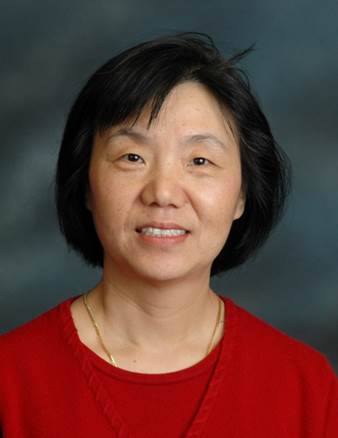Lynn Soong, MD, PhD, chair of ASTMH's Kinetoplastida Subcommittee on program committee, is a professor in the Departments of Microbiology/Immunology and Pathology at the University of Texas Medical Branch. She is also the associate director of the Institute for Human Infections and Immunity among other leadership roles. Soong’s research focuses on New World cutaneous, mucosal and visceral leishmaniasis.
1) We’re grateful that you’ve been an ASTMH for almost 10 years. Wha t are some of the factors that make you want to renew your membership each year?
t are some of the factors that make you want to renew your membership each year?
The most important thing for me is to meet with others at Annual Meetings. This gives me the opportunities to make friends who are working on different areas (such as parasite-insect interactions or drug development), or are from endemic countries. I may know some of them through their publications, but chatting with them reduces the distances among us. Members on our Kinetoplastida sub-committee can have social events, chatting about new research directions or programs.
2) You presented on Leishmania vaccine research at the Annual Meeting in November. It was great to see a symposium devoted to the topic. For policy makers and others who might not have an extensive scientific background, what is important to know about this research?
At the 2013 Annual Meeting, we had two Leishmania vaccine-related symposiums running back-to-back in the same location. It was convenient for most audiences, as they would get big pictures regarding laboratory discovery/tests, field studies, and problems in distributing vaccines in disease control. Dr. Pradeep Das (India) raised an important question as to who should receive vaccines for visceral leishmaniasis control, if we ultimately made vaccines. Such symposium format and discussion are very helpful for policy makers, researchers, and care providers.
3) The symposia kicked off additional collaboration on Leishmania vaccines. Please discuss how this came about and the follow up that has occurred since.
After the symposia, about 20 scientists sit down in the same room, discussing common issues and future plans (see group photo). We all agreed that due to limited resources, the Leishmania vaccine community should work collectively to set up priorities. Dr. Greg Matlashewski (Canada) and Dr. Hira Nakhasi (FDA) had agreed to draft a “Leishmania Vaccine Initiative,” and others had revised it further via emails. We wish to share write paper with WHO-TDR for input and support, and to increase the awareness from policy makers and publics for the feasibility of developing anti-Leishmania vaccine(s).
4) What tips do you have for trop med researchers who would like to accomplish something similar and further their scientific collaborations?
Be persistent in what you are doing. Be active (and brave) in networking.
5) What can the Society do to promote interests in Leishmania?
Leishmania- and Trypanosoma-related presentations are relatively low in numbers at the Annual Meetings. Active promotion of abstract submission and meeting presentations will be helpful. This would be achieved partially via better organization of oral presentations for these parasite sections, and via Travel Awards. For example, offering Travel Awards for trainees (if both trainees and PI attend Annual Meetings) has been successfully used by other societies. Meanwhile, we have invited more members to serve on our sub-committee, so that we are ready for receiving more abstracts this year and then on.
6) Last question, so it’s a fun one. You get the opportunity to go back in time. You can either have a conversation with any scientist who has ever lived OR observe a moment of scientific history. What would you choose and why?
Major Walter Reed is on the top of my list. He was a physician scientist, whose work cofirmed that yellow fever is transmitted by a particular mosquito species. His work had greatly influenced biomedicine, epidemiology, and disease control strategies. He died in 1902 at age 51. What would be his new discoveries if he lived for another 30 years?
-----
ASTMH members are the best and the brightest in their field. Our member interviews highlight our diverse and growing membership. To read other member profiles, click here.